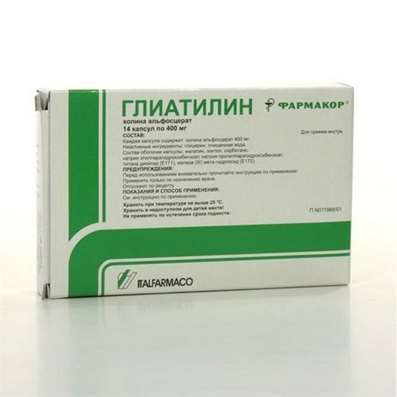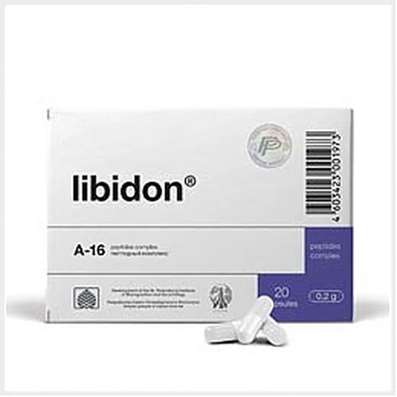Instruction for use: Nicergoline (Nicergolini)
I want this, give me price
Trade name of the drug – Sermion, nicergoline, Nilogrin, Nicergoline-Verein, Nicergoline Deco
The Latin name of the substance Nicergoline
Nicergolinum (genus. Nicergolini)
Chemical rational name: (8beta) -10-methoxy-1,6-dimetilergolin -8-methanol 5-bromo-3- pyridinecarboxylate (ether)
Gross formula C24H36BrN3O3
Pharmacotherapeutic group: Angioprotectors and proofreaders microcirculation
Alpha-blockers
Corrector disturbance of cerebral circulation
The nosological classification (ICD-10)
F01 Vascular dementia: Cerebrovascular dementia
F07.2 Postkontuzionny syndrome: Post-traumatic encephalopathy; post-concussion syndrome
F09 organic or symptomatic mental disorder, unspecified: Organic CNS; organic psychosis; Psychosis endogenous; Psihooorganichesky syndrome; Psychoorganic senile syndrome; Psychoorganic syndrome in the elderly; Psychotic disorders in organic diseases of the central nervous system; syndrome psychoorganic; Vascular psychosis; senile psevdomelanholiya; Exogenously-organic psychosis; Endogenous psychosis; Psevdomelanholiya senile
G43 Migraine: The pain of migraine; Migraine; hemiplegic migraine; Migraine headache; A migraine attack; Continuous headache; hemicrania
H18.4 Corneal degeneration: corneal infiltrate; Secondary corneal dystrophy; The destruction of the cornea; corneal Dystrophy; Keratitis with corneal destruction; Violation of corneal trophism; Violation of the integrity of the cornea; Violation of the integrity of the corneal epithelium; Primary corneal dystrophy; Degenerative corneal disease
H36.0 Diabetic retinopathy (E10-E14 + with common fourth character .3): Haemorrhagic diabetic retinopathy; Diabetic retinopathy; Macular degeneration in patients with diabetes
H47.0 Disorders of optic nerve, not elsewhere classified
H81.4 Vertigo of central origin: Vertigo labyrinthine origin; vestibular vertigo; Vertigo of vascular origin
H91 Other hearing loss: Age-related hearing loss Vascular; Age-related vascular hearing loss; Age-related hearing loss; Idiopathic hearing loss; Hearing loss; hearing loss; Impairment of hearing vascular or toxic origin; Hearing loss perceptual type
I63 Cerebral infarction: ischemic Stroke; Ischemic brain disease; Ischemic stroke; Ischemic stroke and its consequences; Ischemic cerebral stroke; Ischemic cerebrovascular accident; Ischemic brain damage; Ischemic brain damage; ischemic conditions; Cerebral ischemia; Acute hypoxia brain; Acute cerebral ischemia; Acute ischemic cerebrovascular accident; Acute cerebral infarction; Acute ischemic stroke; Acute period of ischemic stroke; Focal cerebral ischemia; Ischemic stroke; recurrent stroke; The syndrome of Morgagni-Adams-Stokes; Chronic cerebral ischemia; cerebrovascular stroke; embolic stroke; Ischemic brain damage
I66 Occlusion and stenosis of cerebral arteries, not resulting in cerebral infarction: Thrombosis of the cerebral vessels; Cerebral thrombosis; Thrombosis of the cerebral vessels; Thromboembolism; Thromboembolism cerebral vessels; Embolism of cerebral vessels; Cerebral embolism; Thrombosis of cerebral arteries; Thrombosis of the renal artery
I67.2 Cerebral atherosclerosis: Atherosclerosis of the arteries of the brain; Atherosclerosis of cerebral vessels; Atherosclerotic changes in cerebral vessels; Vascular diseases of the brain; Sclerotic ischemic attacks; Sclerosis of cerebral vessels
I70.2 Atherosclerosis of arteries: arteriosclerosis obliterans; Arteriosclerosis peripheral arteries; Atherosclerosis of the arteries of the lower extremities; Atherosclerosis of peripheral arteries; Atherosclerosis limbs; Occlusive disease of the lower extremities; arteriosclerosis obliterans; Arteriosclerosis obliterans of lower limb arteries; Atherosclerosis obliterans of the upper limbs; Arteriosclerosis obliterans of lower extremities; Atherosclerosis of arteries; limb arteriopathy; Arteriosclerosis obliterans limbs; arteriosclerosis obliterans
I73 Other peripheral vascular disease: peripheral angiopathy; limb arteriopathy; The disease of arteries; Violations of peripheral arterial circulation; Lack of blood flow arteriovenous; Obliterating diseases of arteries; occlusive disease; Occlusive disease with severe intermittent claudication; obliterating diseases of arteries; Chronic obliterating peripheral arterial disease; endarteritis obliterans; Ischemic lesions stop
I73.0 Raynaud's Syndrome: Raynaud's syndrome Leriche; Raynaud's disease; Raynaud's phenomenon; RaynaudLeriche syndrome; Raynaud's disease; Raynaud's syndrome with trophic disorders; Peripheral angiopathy
I79.2 Peripheral angiopathy in diseases classified elsewhere: diabetic angiopathy; Angiopathy in diabetes; arteriosclerosis diabetic; Pain in lesions of peripheral nerves; Diabetic angiopathy; Diabetic microangiopathy; Diabetic vascular disease; Intermittent angioneurotic disbaziya; Macroangiopathy in diabetes; microangiopathy; Microangiopathy in diabetes mellitus; Tingling sensations in the hands and feet; Coldness in the extremities; Peripheral angiopathy; Peripheral arterial disease; Sclerosis Menkeberga; Chronic obliterating diseases of arteries
N31.2 neurogenic bladder weakness, not elsewhere classified: Urinary incontinence in a stressful situation; Atony of bladder; Atony of the bladder (the sphincter) (neurogenic); Impaired function of the sphincter of the bladder; Neurogenic bladder disorders; Neurogenic bladder disorder; Neurogenic bladder; Functional insufficiency of the sphincter of the bladder; Imperative incontinence
N40 Hyperplasia of prostate: Prostate adenoma; BPH; Prostatauxe; prostate Hypertrophy; Dysuric disorders caused by benign prostatic hyperplasia; Dizuricheskie disorder with benign prostatic hyperplasia; Dysuria with prostate cancer; Benign prostatic giperpalaziya; Benign prostatic hyperplasia; Benign prostatic hyperplasia stages 1 and 2; Benign prostatic hyperplasia I degree; Benign prostatic hyperplasia II degree; Benign prostatic hypertrophy; The disease of the prostate gland; Acute urinary retention related to benign prostatic hyperplasia; Benign prostatic hyperplasia stages 1 and 2 in combination with prostatitis; paradoxical ischuria
R42 Dizziness and disturbance stability: vertigo; Dizziness; Dizziness and nausea during travel on transport; disorders of balance; vestibular disorders; disequilibrium; Ischemic disorders of hearing and balance
T90.5 Effects of intracranial injury: Condition after traumatic brain injury; Conditions after traumatic brain injury; encephalopathy; Residual effects of traumatic brain injury; Recovery after traumatic brain injury; Conditions after traumatic brain injury
CAScode27848-84-6
DescriptionofNicergoline
White or white with a slightly yellowish white crystalline powder, odorless or with a subtle scent. Practically insoluble in water, soluble in ethanol. Easily soluble in chloroform.
Pharmacological Properties of Nicergoline
Pharmachologic effect - Mode of action - alpha adrenoliticheskoe, vasodilating, improving cerebral circulation.
It has both alpha-adrenoceptor blocking action and an antispasmodic action myotropic resistive vessels (especially active against cerebral and limbs), increasing their permeability to glucose. Blocks vasoconstrictor responses of cerebral vessels, caused by serotonin. It inhibits platelet aggregation. It improves cerebral, pulmonary and renal blood flow, normalizes blood supply to the extremities with spastic arteriopathy. In patients with hypertension can cause a gradual moderate pressure.
Quickly and almost entirely (90-100%) absorbed. Bioavailability - about 60%. Cmax determined after 1-1.5 hours. 90% of the drug is metabolized by hydrolysis, demethylation and glucuronidation to 1,6-dimethyl-8beta-hydroxymethyl- 10alfa metoksiergolina (1-MMDL), 1-hydroxymethyl-6-methyl 8beta- 10alfa metoksiergolina-hydroxymethyl- (1-OHMMDL) and 6-methyl-beta-hydroxymethyl- 10alfa metoksiergolina (MDL - main active metabolite). Kidneys displayed 70-80% of the drug and metabolites during 70-100 hours after administration. Since feces output 20%. T1 / 2 product - 2.5 h, MDL - 12-17 h, 1-MMDL - 2-4 h.
Indications for Nicergoline
Cerebrovascular accidents (including the cerebral arteriosclerosis, stroke, cerebral ischemia, the consequences of thrombosis and embolism of cerebral vessels, post-traumatic encephalopathy, psychoorganic syndrome); migraine; vascular disorders of the peripheral circulatory system (limb arteriopathy, Raynaud's disease), dementia, vertigo, occlusive disease, diabetic retinopathy and angiopathy, degenerative diseases of the cornea, vascular disturbances in the network and the choroid, ischemic optic neuropathy, vestibular and labyrinth disorders of vascular origin ; prostatic hypertrophy, urination disorders associated with neurogenic bladder.
Contraindications for Nicergoline
Hypersensitivity, hypotension, expressed atherosclerosis, peripheral vascular disease, organic heart disease, recent myocardial infarction, angina, bradycardia, acute bleeding, pregnancy, breastfeeding.
Restrictions to application
Impaired function of the cardiovascular system, stomach ulcer and duodenal ulcer history, the presence of mental illness.
Pregnancy and breast-feeding
Contraindicated during pregnancy. At the time of treatment should stop breastfeeding.
Side effect of Nicergoline
From the nervous system and sensory organs: headache, dizziness, somnolence, fatigue, insomnia, agitation, anxiety, fear.
Cardio-vascular system and blood (blood, hemostasis): orthostatic hypotension, angina, reducing blood viscosity, cold extremities.
From the digestive tract: nausea, vomiting, loss of appetite, diarrhea, abdominal pain, increased acidity of gastric juice.
With the genitourinary system: abnormal ejaculation.
For the skin: Sweating.
Allergic reactions: itching and redness of the face and upper body, erythema, urticaria.
Other: pain in extremity, fever.
Interaction
It enhances the effects of antihypertensives, anxiolytics and antipsychotics. Antacids and cholestyramine delay absorption. Avoid joint use with drugs that excite the central nervous system, alpha and beta-agonists.
Overdose
Symptoms: lowering blood pressure.
Precautions for substance Nicergoline
When the counter bradycardia (heart rate at rest -. Less than 50 beats / min), the drug is only possible with careful medical supervision. While the use of anticoagulants and antiplatelet agents should be monitored for blood clotting parameters. To use caution with antihypertensive drugs.
After parenteral administration for the prevention of orthostatic effect or in the event of severe hypotension is recommended to take a horizontal position for 10-15 minutes.
Patients with renal failure, as well as elderly patients the daily dose should be reduced. Should not be used during the drivers of vehicles and people skills relate to the high concentration of attention. At the time of treatment should refrain from drinking alcohol.

 Cart
Cart





